2017 Toyota Sequoia Tires & Services
Get Started
Complete Auto Care for Your 2017 Toyota Sequoia
-
TIRES FOR YOUR 2017 Toyota Sequoia View Tire Info GET TIRE PRICING
-
REPAIR FOR YOUR 2017 Toyota Sequoia View Repair Info SCHEDULE REPAIR
-
MAINTENANCE FOR YOUR 2017 Toyota Sequoia View Maintenance Info SCHEDULE MAINTENANCE
-
OFFERS FOR YOUR 2017 Toyota Sequoia Limited Time Tire Offers VIEW ALL COUPONS
2017 Toyota Sequoia Tires
Recommended Tires | Tire Information
2017 Toyota Sequoia Tires Sizes, Speed Ratings, and Inflation
Not sure about your 2017 Toyota Sequoia tire size? Use the following chart to find information on tire size, speed rating, and inflation.
| Trim Level | Speed Rating | Inflation in PSI F/R | Tire Size |
|---|---|---|---|
| 2017 Toyota Sequoia Platinum | H | 30 PSI/33 PSI | P275/55R20 |
| 2017 Toyota Sequoia Limited | H | 30 PSI/33 PSI | P275/55R20 |
| 2017 Toyota Sequoia SR5* | H | 30 PSI/33 PSI | P275/55R20 |
| 2017 Toyota Sequoia SR5* | T | 33 PSI/33 PSI | P275/65R18 |
|
2017 Toyota Sequoia Platinum Speed Rating: H Inflation F/R: 30 PSI/33 PSI |
|
2017 Toyota Sequoia Limited Speed Rating: H Inflation F/R: 30 PSI/33 PSI |
|
2017 Toyota Sequoia SR5* Speed Rating: H Inflation F/R: 30 PSI/33 PSI |
|
2017 Toyota Sequoia SR5* Speed Rating: T Inflation F/R: 33 PSI/33 PSI |
* Note: these models have different tire sizes depending on vehicle options.
Recommended Tires for Your 2017 Toyota Sequoia
What tires are best for a 2017 Toyota Sequoia? Check out the following tire brands and types.
 ALENZA AS ULTRA
ALENZA AS ULTRA
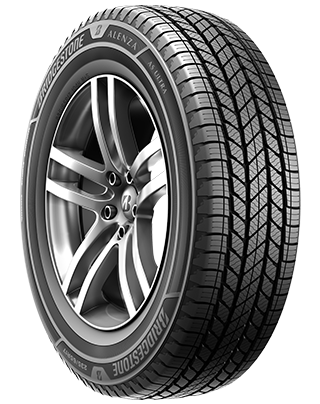
- No warranty
- All-Season
- Light Truck Tires
 Blizzak DM-V2
Blizzak DM-V2
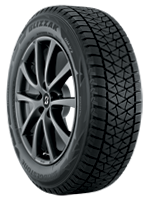
- No warranty
- Winter
- Winter
 DriveGuard Plus
DriveGuard Plus
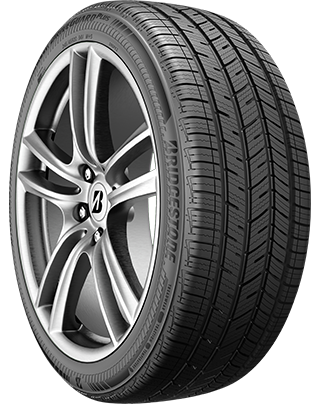
- Platinum Pact Limited Warranty
- All-Season
- Performance
 Dueler H/L Alenza
Dueler H/L Alenza
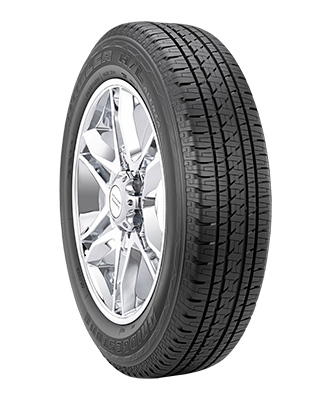
- Platinum Pact Limited Warranty
- All-Season
- Light Truck Tires
 Dueler H/L Alenza Plus
Dueler H/L Alenza Plus
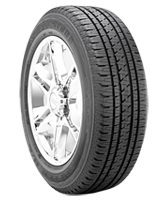
- Platinum Pact Limited Warranty
- All-Season
- Light Truck Tires
 Dueler A/T Revo 3
Dueler A/T Revo 3
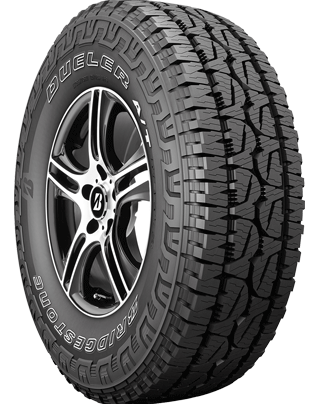
- Platinum Pact Limited Warranty
- All-Season
- Light Truck Tires
 Dueler H/T 684 II
Dueler H/T 684 II
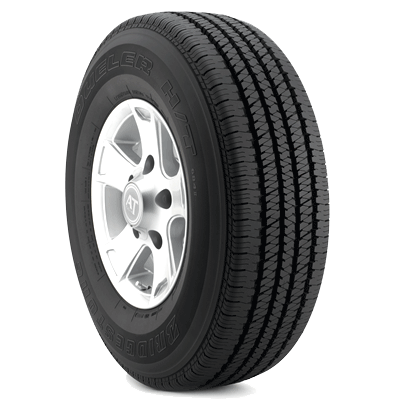
- Platinum Pact Limited Warranty
- All-Season
- Light Truck Tires
 Dueler H/T 685
Dueler H/T 685
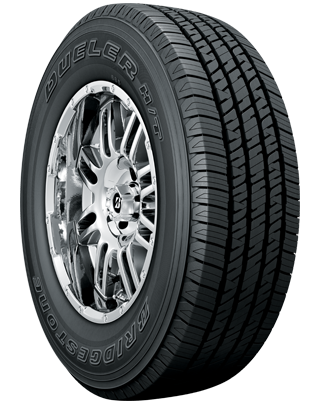
- No warranty
- All-Season
- Light Truck Tires
 WEATHERPEAK
WEATHERPEAK
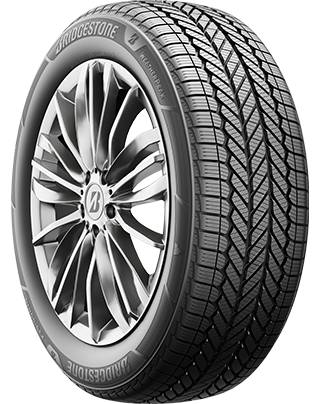
- Platinum Pact Limited Warranty
- All-Season
- Passenger Tires
 Destination LE3
Destination LE3
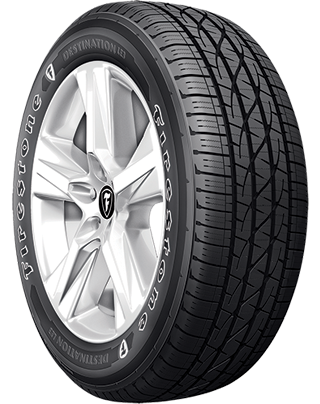
- No warranty
- All-Season
- Light Truck Tires
 Destination A/T2
Destination A/T2
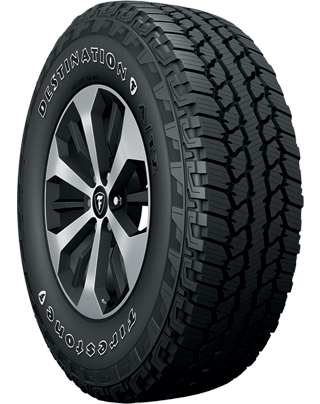
- Gold Pledge Limited Warranty
- All-Season
- Light Truck Tires
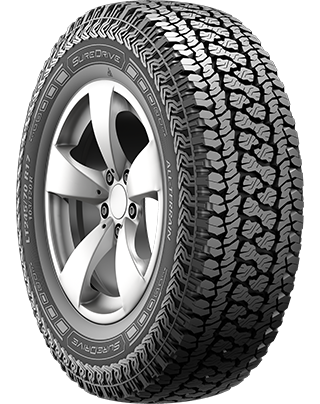
- No warranty
- All-Season
- Light Truck Tires
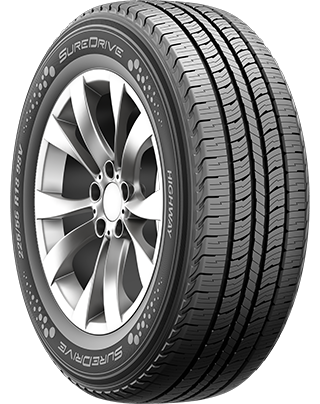
- No warranty
- All-Season
- Light Truck Tires
 PROXES ST III
PROXES ST III
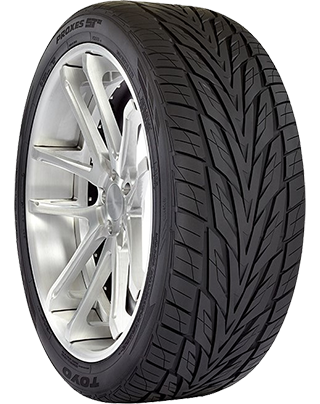
- No warranty
- All-Season
- Light Truck Tires
 OPEN COUNTRY R/T
OPEN COUNTRY R/T
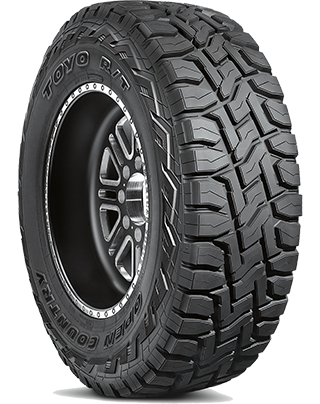
- No warranty
- All-Season
- Light Truck Tires
Choosing 2017 Toyota Sequoia Tires
Other than getting the proper tire size, you also want to consider a handful of other factors when buying new Toyota Sequoia tires like where and how you drive, and what tire brand you trust most. When thinking about your driving conditions, consider where you live (mountains vs. city vs. countryside) and the kind of weather can catch you off-guard. (Watch out Tornado Alley!) It's not uncommon for drivers in states that experience all four seasons to buy more than one set of tires. one for winter and one for summer. Other drivers prefer the convenience of all-season tires. They make one trip to the tire shop and they're pretty much ready for rain, light snow, or sun!
Next, consider your driving style. If you're a diehard off-roader, you have very different tire needs than a highway commuter who doesn't leave the paved path. Browse Toyota Sequoia tires online or come to your nearby Firestone Complete Auto Care for help selecting the tire that's right for you.
Toyota Sequoia Installation and More
Firestone Complete Auto Care has been a leading tire provider for more than a century. We're your one-stop shop for tire installation, rotation, and ongoing maintenance! Shop 2017 Toyota Sequoia tires online and schedule an installation appointment.
Questions About 2017 Toyota Sequoia Tires
-
Why does Toyota tire inflation matter? The right tire pressure can make all the difference. Proper tire inflation helps increase fuel economy, improve braking time, and boost tire lifespan! Even a small change in tire pressure can impact your driving.
-
What do the tire sidewall numbers mean for my Toyota Sequoia? Your tire sidewall gives you information about load carrying capacity, speed rating, treadwear, traction, and tire size. Talk to one of our tire technicians to learn how to read the numbers on your tire!
-
Can I check the tread depth on my Toyota tires at home? Stay on top of your tire tread depth to help avoid a dangerous drive. You can check tread depth with a penny. Hold the penny so that Abraham Lincoln is facing you, then place your penny into a tread groove upside down. If you can see the top of Abe’s head, your tread is shallow and it might be time for new Toyota Sequoia tires. Grab a penny. Hold the so that Abe Lincon's head is facing you and his hair is pointing toward the ground. Then, place the penny into a tread groove. If you can see the top of Abe’s head, your tread is shallow and it might be time for new Toyota Sequoia tires.
Types of 2017 Toyota Sequoia Repairs
How do I learn more about auto repairs? Click on a service below to read about the types of Toyota Sequoia repairs we do at Firestone Complete Auto Care.
About 2017 Toyota Sequoia Repairs
No driver looks forward to car repairs. We’re here to change that, though. At Firestone Complete Auto Care, we want to make car repair painless and hassle-free. When it’s time for 2017 Toyota Sequoia repair services, head to your nearest Firestone location and rest easy knowing that your Sequoia is in capable hands. We'll work to evaluate the scope of repairs needed and explain your options. We’ll never recommend a repair we don’t think is necessary for your safety or the performance of your Toyota.
What Will Toyota Sequoia Repairs Cost?
The cost to repair your 2017 Toyota Sequoia depends on what kind of repair you need, costs of replacement parts or repair supplies, the amount of labor necessary to get the job done, and your locale. But regardless of where you’re located, check out our website for repair coupons and offers that could save you some cash.
A few different aspects can influence repair costs for your 2017 Toyota Sequoia, like
2017 Toyota Sequoia Auto Repair Questions
-
Can scheduled maintenance help me avoid repairs? The cheapest 2017 Toyota Sequoia repair is the one that isn’t necessary in the first place! Staying up-to-date with your car’s scheduled maintenance services is a great way to keep future repair costs low.
-
What's wrong if something feels 'off' in my Toyota? No, we’re not talking about finding the best jams on the radio! You know your car best, and you’re the first person who will notice if something doesn’t feel right (like new smells, sights, or sounds coming from your car). If you sense that something is 'off,' stop in for a Courtesy Check to have these symptoms checked out ASAP. Early action could help you prevent Toyota Sequoia repairs.
-
Do I have to get the repairs you recommend for my Toyota? Trust is more than just a saying on the wall. It’s a window underneath it. That’s why we won’t recommend services or repairs for your 2017 Toyota Sequoia unless we think they’re vital to your safety on the road.
Brake Repair for Your 2017 Toyota Sequoia
You might have a strong and reliable engine in your Toyota Sequoia. But if you can’t brake, it might as well be scrap metal. If you notice your brakes are squeaking or not working well, don’t wait! Safe driving and responsive brakes go hand in hand. Plus, waiting can lead to more expensive parts wearing out and requiring replacement. Go to your local Firestone Complete Auto Care for 2017 Toyota Sequoia brake repairs. We offer a variety of brake services like brake pad/shoe removal and replacement, brake rotor/drum resurfacing, brake fluid exchange, and brake caliper and wheel cylinder service.
Toyota Sequoia Brakes Frequently Asked Questions
-
Why does my Sequoia shake when I brake? If your Sequoia shakes when you brake, you could be dealing with warped rotors, faulty brake calipers, worn brake pads or rotors, or loose or worn suspension parts. Schedule a free brake inspection at Firestone Complete Auto Care for help diagnosing your brake issue.
-
What is the average lifespan of Sequoia brake pads? You can usually get around 30,000 to 40,000 miles out of your brake pads, but how and where you drive your Sequoia can affect this. Hauling large loads or riding your brakes can shorten their lifespan, while smoothly braking and mostly sticking to highways can help your brake pads last longer.
-
Is it bad if my Sequoia is leaking brake fluid when off? Your Sequoia has a closed hydraulic brake system, meaning you should not have a brake fluid leak under normal conditions. However, parts of your brake system can wear out over time or become damaged, which can lead to a brake fluid leak.
2017 Toyota Sequoia Drivetrain Repairs
You don't want to go to just anyone for drivetrain repair. Drivetrains for front, rear, and all-wheel-drive and 4WD vehicles are all different. You want to go to Firestone Complete Auto Care. We can take care of most 2017 Toyota Sequoia drivetrain components Your Toyota Sequoia may need driveshaft attention if you feel resistance when turning, heavy vibrations in your floorboards, clunks when shifting, or vibration as your vehicle accelerates.
2017 Toyota Sequoia Drivetrain Q&A
-
What are the symptoms of a damaged Toyota drivetrain system? Noises toward the back of your Toyota Sequoia, leaking fluid, trouble turning — these could all be signs of drivetrain damage you want to address. Take action before something more severe happens.
-
What triggers the malfunction indicator light (MIL) in a Sequoia? A multitude of problems can activate your Sequoia’s malfunction indicator light (better known as the check engine light), including issues with the engine, transmission, sensors, electrical system, or connectors.
-
How concerning is a drivetrain malfunction in my Sequoia? A drivetrain malfunction in your Sequoia should never be taken lightly. Driving with a malfunctioning drivetrain can put you in danger and lead to further vehicle damage, so it's essential to have a qualified mechanic assess and repair the problem as soon as possible.
Wheel Alignment for 2017 Toyota Sequoia
With an alignment service, adjustments are made to your Toyota Sequoia’s suspension system, which connects the wheels with the rest of the vehicle. When your car has an alignment service, the individual angles of your tires are adjusted so that they come into contact with the road in just the right way — the way Toyota intended them to. When you bring in your 2017 Toyota Sequoia, we’ll perform an alignment check first. After that, we can adjust your wheel alignment angles until they match Toyota’s recommended measurements.
Questions About Toyota Sequoia Alignment
-
What can knock my Toyota Sequoia out of alignment? When it’s safe to do so, avoid driving over potholes or hitting curbs. These road obstacles can wreak havoc on your wheel alignment, as can wear and tear from rough road conditions.
-
How frequently should you get a wheel alignment for your Sequoia? It’s usually suggested you check your alignment about every 6,000 miles or 6 months (whichever occurs first). Still, you should reference your Sequoia owner’s manual for Toyota's recommended interval.
-
Do you need to get your Sequoia wheels aligned when you get new tires? It’s likely not a requirement to get an alignment when you install new tires on your Sequoia, but it's a smart idea to do so anyway. An alignment can help ensure even tire wear, smooth handling, and better fuel efficiency.
2017 Toyota Sequoia Engine Services
If your 2017 Toyota Sequoia needs engine repair, our technicians will provide you with a thorough explanation beforehand. We don't start working until we have your approval. If a service can wait, we’ll make sure you know. If it's necessary for your safety, we'll make sure you understand that, too. We want to provide you with the information you need to make an informed engine repair decision. By choosing Firestone Complete Auto Care for Sequoia engine repairs and you can drive easy knowing that we use Toyota-approved parts and fluids — timing belt, valve guide seal, fuses, or another part.
Questions About 2017 Toyota Sequoia Engines
-
Why does my Sequoia’s check engine light come on when I start it? Generally, your check engine light turning on upon ignition is not a bad thing. It’s just your Sequoia firing up its circuits. The light should turn off in a bit, but come see us if it doesn't.
-
Why does my Toyota engine sound different? Unusual noises can signal a problem with your Toyota Sequoia engine. Tapping or knocking could mean you're low on oil. Whistling could mean a belt is misaligned or there's an intake leak. Squealing can indicate a loose fan belt, and grinding might be coming from the brakes, not the engine.
-
What could damage my Toyota Sequoia engine? Some driving habits are not so great for your engine. These include driving on a near-empty gas tank, flooring the gas pedal while the car is in Park, or accelerating too quickly, too soon. Protect your engine’s performance and efficiency by distancing yourself from these habits.
2017 Toyota Sequoia Tire Repair
If the road has been rough on your 2017 Toyota Sequoia tires, Firestone Complete Auto Care can help. There’s a chance your tire could be plugged and patched (rather than replaced). Our technicians can inspect your tire and let you know if it is safe to repair. We’ll begin by taking a look at where the damage is, the type and extent of the tire damage, and how all of your tires are wearing.
If your 2017 Toyota Sequoia tire puncture can be repaired, we’ll get to work on the steps to fix it: (1) Remove the tire from the wheel for inspection and repair, (2) use a filler to close up the puncture (this is to keep moisture from getting in), and (3) seal the inner liner with a repair unit to prevent air loss.
Toyota Sequoia Tire Repair Questions
-
How soon should I have my flat tire repaired? Driving on a flat tire is not a good idea. Your Sequoia engine will keep running with a flat tire, but you could damage your wheel by continuing to drive on a flat.
-
Can I use an emergency/temporary sealant to fix my Toyota's flat tire? Fast fixes are a mixed blessing. They’ll help you get your Toyota Sequoia to Firestone Complete Auto Care, but don’t count on them to keep you on the road for very long. Using a temporary sealant may also void a Bridgestone or Firestone tire warranty.
-
What can cause Sequoia tires to keep losing air? If your Sequoia tires are always losing air, you may have a puncture, damaged wheel, or leaking valve stem.
Maintenance for Your 2017 Toyota Sequoia
When it comes to your Toyota Sequoia, how you treat your car makes all the difference in its performance. With proactive maintenance, your Sequoia could be on the road well past the 200,000 mile mark.
2017 Toyota Sequoia Maintenance Schedule
What is the manufacturer recommended maintenance schedule for a 2017 Toyota Sequoia? Find maintenance info for your vehicle.
2017 Toyota Sequoia Maintenance Information
It can be overwhelming, but fortunately, there’s a resource that takes the guesswork out of routine Sequoia maintenance. Rely on the recommended maintenance schedule that’s been created just for your 2017 Toyota Sequoia! The recommended maintenance schedule is put together by Toyota, your vehicle manufacturer. Scheduled maintenance services can vary depending on driving conditions, climate, and other factors; however, there’s a good chance that your vehicle’s recommended maintenance services will include tire rotations, vital fluid checks/exchanges, filter changes, brake pad replacement, and oil changes. Keeping up with routine service appointments is a great way to keep your Sequoia running for longer, increase your vehicle safety, and maybe even save you the headache of dealing with common 2017 Toyota Sequoia problems in the future.
Essential Maintenance to Keep Your 2017 Toyota Sequoia Running Newer, Longer
Come to Firestone Complete Auto Care for manufacturer-recommended routine maintenance on your 2017 Toyota Sequoia and our technicians will jump right in with a Courtesy Check. A Courtesy Check helps "set the stage" for your service and catch any small problems before they turn into big repairs. Each Courtesy Check includes a free battery test and an inspection of your Sequoia's windshield wiper blades, head and tail lights, filters, fluid levels, tires, and alignment.
Firestone Complete Auto Care is your spot for 2017 Toyota Sequoia maintenance. So visit us regularly, or visit us urgently. Many locations are open on weekends and in the evening.
2017 Toyota Sequoia Maintenance Q&A
-
What do I do if I hit a pothole in my Toyota Sequoia? You know your Toyota Sequoia better than anyone else, so you’ll know if something doesn’t feel right while driving. Have your alignment checked (and adjusted if necessary) as soon as you notice a pulling steering wheel to prevent suspension damage or uneven tire wear.
-
When should I switch my Toyota Sequoia to high mileage oil? If your Toyota Sequoia has ticked past 75,000 miles, consider switching to high mileage oil at your next oil change to give your engine what it needs to go another 75,000 (or more!). High mileage oil: make it a high priority!
-
Can I ignore dashboard lights on my Toyota? Don't ignore dashboard warning lights! Bring your Toyota Sequoia in for a diagnostic code scan as soon as a dashboard warning light flashes on, whether it's your check engine or battery light. Dashboard lights alert you to trouble under the hood.
The Right Battery Size for a 2017 Toyota Sequoia
Researching battery replacements for your Toyota Sequoia?
| Battery | Engine | Warranty | Cold Cranking Amps | |
|---|---|---|---|---|
| 27F-3 | V8/5.7L | Replacement 24 months | Performance months | 710 |
| 24F-6 | V8/5.7L | Replacement 36 months | Performance months | 750 |
| 24F-RP | V8/5.7L | Replacement 48 months | Performance months | 750 |
2017 Toyota Sequoia Car Batteries
The average car battery lasts three to five years. Check your battery regularly and replace it as needed so it doesn’t leave you and your Toyota Sequoia stranded. Pay attention to clues that your battery is on its way out. A slow engine crank, an illuminated check engine light or battery signal, bloated battery case, corrosion-covered posts, or dim headlights can all signal that your battery is waving goodbye.
You can also get a Free Battery Test at your local Firestone Complete Auto Care. Stop by for a free battery test and, if needed, a replacement battery for your 2017 Toyota Sequoia. Car batteries are only one of our many strong suits. Our technicians are familiar with Toyota-specific recommendations for Sequoia battery CCAs and reserve capacity. Get help identifying the type and size of battery that matches your vehicle, and schedule a fast car battery replacement at your earliest convenience.
Top Toyota SequoiaCar Battery Questions
-
Why doesn’t my Toyota Sequoia battery stay charged? A battery is in its final hour when it will no longer hold a charge. The battery may be too old. Or, you may have been leaving your car doors ajar and the cabin light at night. Stop by for a complimentary battery check at your favorite Firestone Complete Auto Care and get a handle on your car battery’s health.
-
How long can I expect my car battery to last? A car battery normally lasts three to five years, but this number can vary based on battery type, your driving habits, and battery maintenance.
-
What is the white, crusty substance accumulating on my Sequoia’s battery post? A chemical reaction between battery acid and the air can cause a white, crusty buildup to form on the terminals of your Sequoia car battery. This buildup — known as corrosion — can impede the flow of electricity and cause a range of issues, from poor performance to premature battery failure.
2017 Toyota Sequoia Oil Change Service
Your 2017 Sequoia’s oil should be changed according to Toyota’s recommended oil change intervals. Outside of Toyota-recommended oil change intervals, your Sequoia may need an oil change if your check engine light is on, you hear engine knocking, smell oil inside the car, or notice an unusual amount of exhaust. You may also need an oil change more frequently than Toyota recommends if you haul heavy loads, drive in dusty terrain, enjoy off-roading, or go long distances at low speeds.
Whether it’s synthetic, conventional, or a blend of both — your local Firestone Complete Auto Care has the right oil for your Toyota Sequoia. Talk with a teammate and consult your owner's manual before picking a motor oil. At Firestone Complete Auto Care, you can choose from the following oils: Quaker State® Advanced Durability™ conventional oil, Pennzoil® High Mileage Vehicle® motor oil, Pennzoil Platinum® Full Synthetic motor oil with PurePlus™ Technology, and Shell Rotella® heavy-duty engine oil. During an oil change, an auto technician will change your Sequoia’s oil, replace and recycle your used oil and filter, check all of your other filters, refill vital car fluids, and visually inspect the rest of the vehicle. Get professional engine care by making an oil change appointment for your Sequoia today.
2017 Toyota Sequoia Oil Change Questions
-
Why is the oil light on in my Toyota Sequoia? The oil change light in your Toyota Sequoia could be triggered by an overdue oil change. However, if the oil pressure light is on, you may be dealing with low engine oil, a failing oil pump, a clogged oil filter, or a malfunctioning oil pressure sensor.
-
Can I change my Toyota Sequoia oil at home? Changing engine oil at home isn’t as simple as it’s made out to be. You’ll have to figure out how to properly dispose of the oil and buy special tools. Having your oil changed professionally can not only reduce the risk of something going wrong during the service, but it’ll also help your car perform smoothly down the road.
-
Why is my Toyota exhaust smoke gray or blue? Your engine could be burning oil due to a leak. It may be time for a pro to take a look. A leak can be caused by a variety of issues including faulty valve seals, blown piston rings, or damaged cylinder walls.
2017 Toyota Sequoia Engine Tune-Ups & Maintenance
Periodic tune-ups can bring more power back to your Sequoia’s engine. The Firestone Complete Auto Care location in your community offers several Toyota Sequoia engine tune-up services. The first is the standard Firestone Tune-Up. This includes the installation of new spark plugs and a visual inspection of your engine’s components, plus a lifetime warranty on parts*. A second service option replaces the air and fuel filter in your Sequoia. The third tune-up option is a fuel system cleaning service, which is a three-step process that removes varnish, dirt, and carbon deposits on your Sequoia's fuel injectors, throttle body, and throttle plate. This goes a long way in boosting your fuel system’s overall performance. Keep in mind that your Sequoia's mileage and maintenance history can uniquely impact its tune-up needs. Talk to a technician about your driving style, mileage, and service history to learn more about your vehicle's specific needs.
*Talk to a Firestone Complete Auto Care teammate for full terms and conditions on warranties.
2017 Toyota Sequoia Engine Tune-Up Q&A
-
When should Toyota Sequoia spark plugs be replaced? Replace spark plugs on time or about every 30,000 miles or so. Without the spark of electricity created by spark plugs, your engine doesn’t have the combustion it needs to start — which could leave you stranded on the road. Always replace your spark plugs on time based on Toyota’s recommendations.
-
What do I do if I see a pool of liquid under my Toyota Sequoia? Puddles could indicate that your vehicle is leaking coolant, oil, or brake fluid. Ignoring these leaks can lead to permanent engine damage, so address these symptoms ASAP with a tune-up service.
-
How often should I clean my Toyota Sequoia fuel injectors? The frequency at which car fuel injectors should be cleaned can vary depending on several factors, including the type of fuel used and the driving conditions. Some manufacturers generally recommend a fuel system cleaning as part of your general car maintenance, or as needed based on symptoms of poor fuel system performance.
2017 Toyota Sequoia Suspension Service & Repair
When you first bought your 2017 Toyota Sequoia, you and your passengers probably enjoyed a ride that was smooth and balanced. But these days, things are starting to feel a bit rough. Maybe your Sequoia jolts, drifts to one side, or makes noise whenever you turn or drive over a speed bump. The first sign of problems is a good time to bring your 2017 Toyota Sequoia in for steering and suspension repairs. We’ll get to the source of your car problems and, if steering and suspension service is needed, we’ll go over the services you need and how much they will cost before we do any work.
Questions About 2017 Toyota Sequoia Steering & Suspension
-
What can cause my Toyota Sequoia to have a bouncy ride? If your shocks or struts are in bad shape, they can’t dampen road bumps like they should. This can cause your Sequoia to bounce more than usual.
-
What can cause the front end of my Sequoia to dip forward when I apply the brakes? The forward dip in the front end of your Sequoia when you brake is caused by the weight and momentum transferring to the front wheels. If your suspension system is in bad shape, it can fail to distribute this force, leading your front end to dip further downward.
-
Does treadwear and tire pressure impact my Sequoia's steering and suspension? Maintaining your tires can help reduce strain on the suspension, nd also let you know when it's time to replace your tires. A faltering steering and suspension system could lead to uneven tire wear.
Convenient & Local 2017 Toyota Sequoia A/C Service
Our trained technicians will do what they can to solve your 2017 Toyota Sequoia A/C problems. In this A/C performance inspection, we’ll check out the current condition of your 2017 Toyota Sequoia A/C system to see if repair work is required. This check includes a visual inspection, performance test, and pressure and leak test.
Let's say we repair your 2017 Toyota Sequoia A/C system. We will also perform an A/C evacuation and recharge. To start this process, a technician will flush out the old refrigerant from your vehicle’s A/C system. Then, they’ll use Toyota’s specifications to evacuate the system. The A/C system is recharged with new refrigerant.
Questions About 2017 Toyota Sequoia A/C Systems
-
Why do I get hot air from my Sequoia A/C? An A/C blowing hot air has several possible root causes. There could be an issue with your compressor clutch, a blown fuse, a leak, or a clog in the expansion valve.
-
What can cause an A/C system leak? Over the years, the rubber seals and gaskets in your Sequoia’s A/C system naturally degrade. Moisture can get into the system and cause a malfunction, or parts can simply wear out so that your system no longer seals properly.
-
Why does my Sequoia’s A/C only work when the car is moving? There could be issues with one or more components in the air conditioning or electrical system. Your Sequoia may have a faulty cooling fan or low refrigerant.
Transmission Services for 2017 Toyota Sequoia
The transmission delivers power from the motor to your wheels so that you can drive at your desired speed. Because your transmission is responsible for converting the right amount of power into the right amount of speed, even the smallest transmission problems should be addressed right away. Toyota Sequoia transmission problems can present themselves as shifting delays, jumping or grinding during acceleration, the car shaking at any speed, or a burning smell or whistling sounds coming from under the hood. If you don’t pay attention to Toyota Sequoia transmission trouble you might notice your fuel economy decrease or discover that your Sequoia’s not even driveable. Our expert techs are familiar with 2017 Sequoia services and perform them according to Toyota-recommended specifications. Schedule an appointment at your local Firestone Complete Auto Care at the first sign of transmission problems to help keep your Toyota running for miles and miles.
2017 Toyota Sequoia Transmission Q&A
-
How often does my Sequoia transmission fluid need to be checked? Maintaining your Toyota Sequoia transmission fluid is one of the best ways to maintain your transmission's health. A general rule of thumb is to have your transmission fluid checked and changed about every 30,000 to 60,000 miles, but that timeline can change if you're hard on your Toyota. Leaks or low transmission fluid are easy to spot and affordable to repair.
-
Can transmission fluid leak from my Toyota Sequoia? Yes. Toyota Sequoia transmission fluid can leak over time and potentially cause transmission issues. Worn or damaged seals, a loose or damaged transmission pan, a cracked transmission housing, faulty transmission cooler lines, or an overfilled transmission could cause transmission fluid leaks.
-
Is it okay to drive a Sequoia with a transmission fluid leak? Driving your Sequoia with a transmission fluid leak is highly discouraged. Transmission fluid is vital to the smooth operation of your transmission system, and a leak can put the entire system at risk. A transmission fluid leak may lead to decreased performance, overheating, and possibly even transmission failure.
Vehicle Inspection for 2017 Toyota Sequoia
When you bring your vehicle to Firestone Complete Auto Care for any service, we’ll automatically do a multi-point Courtesy Check. The technician will begin by testing your Toyota Sequoia's battery to see how much charge it has left – and determine if it may fail in the near future. The check will continue with a visual inspection of your Toyota Sequoia's filters, lights, wiper blades, fluid levels, belts, hoses, tires, and alignment.
While every visit to your local Firestone Complete Auto Care includes a Courtesy Check, we also offer an in-depth Complete Vehicle Inspection for your 2017 Toyota Sequoia. During a Complete Vehicle Inspection, we’ll visually check everything that’s on the list for a Courtesy Check. Additionally, we’ll perform a hands-on examination of your steering, suspension, brakes, and exhaust system. This inspection is aimed at informing you of any major problems that could wreak havoc on your 2017 Toyota Sequoia if left unaddressed.
Depending on your location, you may be able to complete your vehicle’s safety tests or state inspection at your nearest Firestone Complete Auto Care. Specific requirements for these types of inspections vary by state.
FAQs for 2017 Toyota Sequoia Vehicle Inspections
-
How do I know if my Toyota Sequoia needs a check-up? If you’ve noticed something that doesn’t feel quite right in your car lately, a Courtesy Check could give you peace of mind. We can help you get to the bottom of strange engine noises, a jerky steering wheel, or an engine that's hard to start.
-
Can you fix my 2017 Toyota Sequoia so it will pass a state inspection test? Don’t panic! Come in for a complete inspection today and we’ll find (and repair) the root cause before you have your vehicle retested.
-
When is the best time to get a complete vehicle inspection for my Toyota Sequoia? It’s generally a good idea to get a complete vehicle inspection for your Toyota Sequoia before a road trip and/or when something strange occurs and you are unable to find the cause. Signs something is up include dashboard lights illuminating, odd noises coming from the engine, and your steering feeling loose or tight.
2017 Toyota Sequoia Radiator Service
Regular, proactive service on the radiator in your 2017 Toyota Sequoia is a huge factor in the longevity of your engine. Toyota recommends that you replace coolant (also called antifreeze) at certain intervals, but you can also take note of any signs your radiator is going bad. Your radiator could be close to causing an engine breakdown if you notice a low coolant light or higher-than-normal engine temperatures on your dashboard, or if you spot coolant leaks coming from your car.
At Firestone Complete Auto Care, we start by performing a thorough inspection of your Toyota Sequoia cooling system. Then, we’ll move on to a machine-powered coolant exchange. Finally, we’ll refill the flushed sealants, lubricants and chemicals, then do a pressure check to catch any possible leaks. When it comes to radiator service and repair, your 2017 Toyota Sequoia is in good hands at Firestone Complete Auto Care.
Questions About Toyota Sequoia Radiators
-
What does an illuminated coolant temperature light mean for my Toyota? Pay attention to the temperature gauge and lights on your dashboard. If a low coolant warning light comes on or your dashboard temperature gauge keeps rising, it’s likely that your engine is about to overheat (and could leave you stranded on the road). Wait for the engine to cool down, then have your coolant system checked immediately at your nearest Firestone Complete Auto Care.
-
My Sequoia overheated! What can cause that? If your Toyota Sequoia engine overheats, it could be because of a clogged radiator, a damaged thermostat, a faulty cooling fan, a malfunctioning water pump, or low coolant levels.
-
Why does the radiator in my Sequoia sound like it’s rumbling or boiling? Your Sequoia’s cooling system could contain air pockets or your radiator might be clogged. Another possibility is a faulty radiator cap, which is an easy fix!